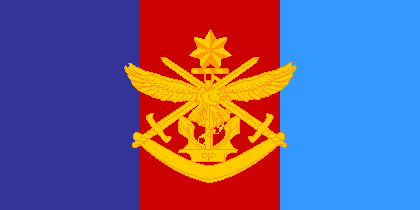Like many other western nations, the Australian government has mandated higher quotas for women in the Australian Defence Forces (ADF), and it’s the military’s job to make it work:
The Australian Defence Force (ADF) is comprised of the three military services: the Royal Australian Navy, the Australian Army, and the Royal Australian Air Force, all of which have been subject to increasing criticism in recent years for being dominated by straight white men. This, it is alleged, makes them, ipso facto, a petri dish for ‘toxic masculinity.’ That allegation has been lent apparent weight by the reporting of multiple gender-related scandals including the ADFA sex scandal, Jedi Council, various hazing rituals, death symbols, and HMAS Success, to name a few.
Some of this criticism has been so strident that past and present military leaders have had no choice but to commission reports and inquiries into standards and practices within the ADF, and to implement various culture change initiatives including Pathway to Change, New Generation Navy, Adaptive Army, and New Horizon. All of these initiatives place significant emphasis on greater integration of women into the respective services but offer limited reasoning other than catch-phrases like ‘diversity,’ ‘equity,’ and ‘modernising.’
All three services are now working toward a target of female representation by 2023. The Navy and Air Force are working toward 25 percent, and the Army is working toward 15 percent. The progress toward these targets, among other commentary on gender issues in the ADF, is detailed in the annual “Women in the ADF” report.
[…]
Concerns with preferential treatment do not end at the recruitment process. Fitness standards for service personnel also differ according to gender, as well as service and age. This means equally-aged men and women in each service are expected to attain different standards of fitness. This, in itself, represents a challenge since both genders complete fitness tests together and are therefore directly exposed to this double-standard from their first day of service. In spite of this policy, many servicewomen elect to continue their fitness assessment to the same level as their male colleagues which is one small contribution to reducing the cultural divide.
The rejection of preferential treatment in the ADF is not just isolated to annual fitness tests. In fact, the 2012 “Review into the Treatment of Women in the Australian Defence Force” led by then-Australian Sex Discrimination Commissioner Elizabeth Broderick includes the following passage:
ADF women strongly believe that when they are singled out, it makes it harder for them to fit in. Highly resistant to any initiative being directed solely at them, ADF women view identical—not differential—treatment as the path to delivering equality. This is most likely in part to avoid the backlash that inevitably trails any treatment perceived as ‘preferential’…
Despite acknowledging this, many of Broderick’s recommendations included gender-specific initiatives that risk being perceived as further preferential treatment, driving a greater wedge between male and female ADF personnel. Perhaps the most troubling recommendation is the targeted recruitment and transfer of women to male-dominated professions that have less female uptake. In practise, this risks techniques akin to coaxing in the recruitment process if these roles are not the preferred choice of female candidates.




